[ Earth ] [ Mapping Infinity | Pockets | Bestiary | Flora ]
Plants, Fungi, Insects and Microbes of Elemental Earth
The flora of the Plane of Earth has one major difficulty to overcome—there’s no light down here in the deep dark of the Anvil. Because of this, there’s little to no greenery to be found down here, and the weird life forms that cling on to the rocks have to find another source of energy — be it chemical, magical or radiation.
Adamant Algae
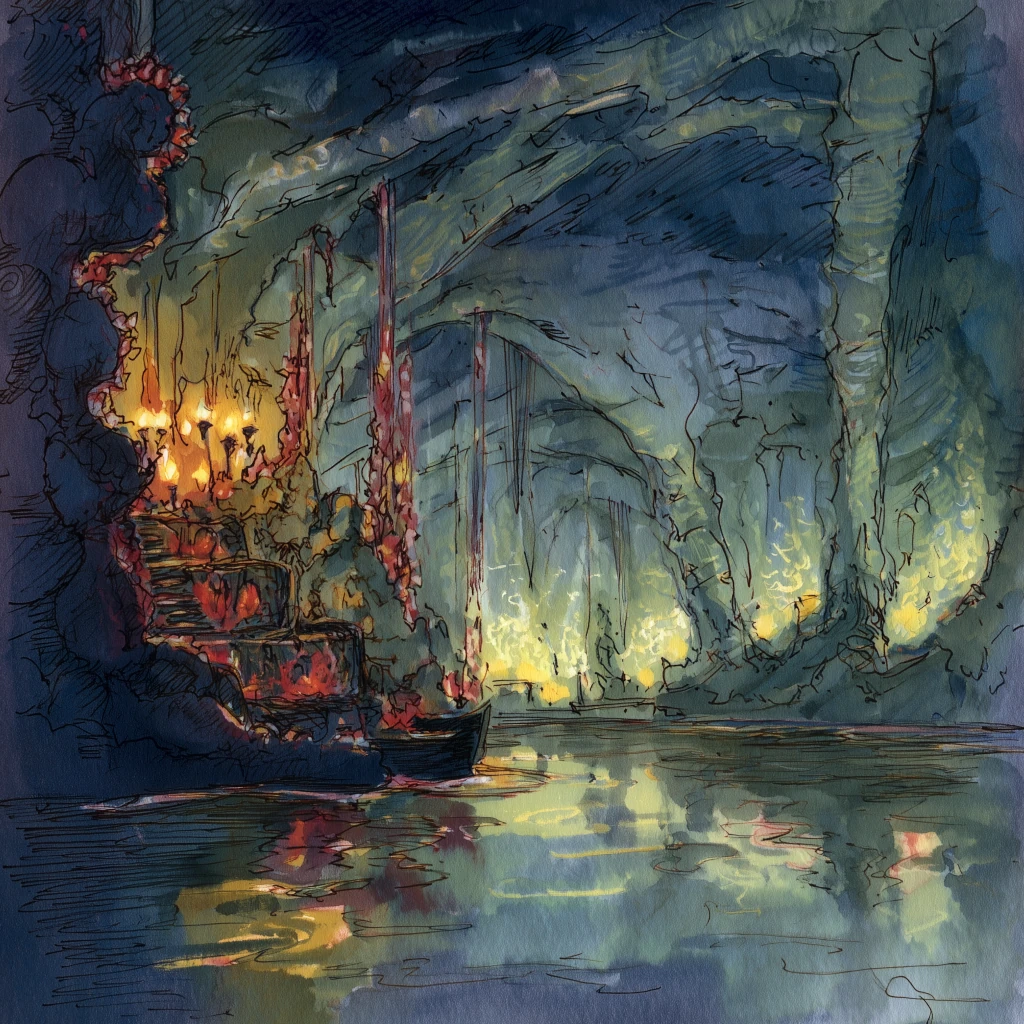
Red adamant algae is rare, as it requires particular conditions to grow—a pool of water situated next to a vein of adamant ore. Adamant is a metal that vibrates with positive energy—the graybeards say that’s what makes it so hard and dense. Now even most forms of magic cannot extract this energy, but adamant algae has learned the dark of it, and it leeches the escaping positive energy to facilitate its growth. Adamant algae plants coat themselves in an oily protective slime, which makes them taste bitter, and imparts some curious properties. Consuming this slime doubles a berks natural healing rate for the next 24 hours [5e: Whenever you spend hit dice to recover health from resting, roll each expended die twice and add up the results together to determine the amount of healing you receive. PF2: Double the number of hit points you regain from resting]. It is unknown how this algae spreads between veins of adamant. Perhaps, ruvoka tribes are responsible for this?
Blightburn Growth
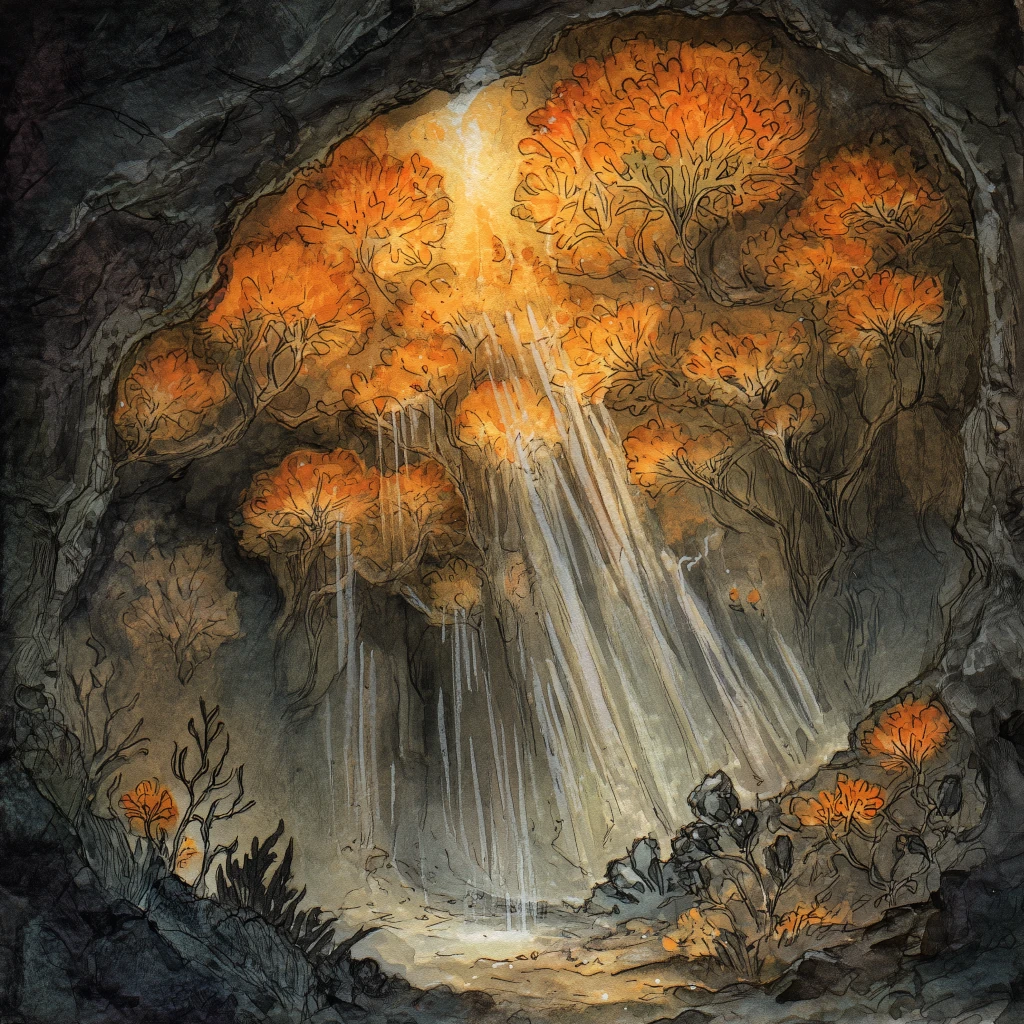
This rusty-orange lichen is feared by miners of all kinds. That’s not because its a harmful plant in itself, but because it only grows in the presence of the high levels of blightburn [this is basically what other folks call ‘radiation’]. It uses these dangerous energies to feed, in the same way regular plants rely on sunlight. Consequently, this also means that blightburn growths are able to block X-ray vision and some forms of scrying too. There’s a thriving trade in powdered blightburn growth, which canny builders mix with clay to make bricks that don’t allow cutters to see through them, although this construction technique is expensive due to the danger associated with harvesting the lichen. Expect to pay upwards of 1 jinx per brick for the genuine article.
Choke Mould
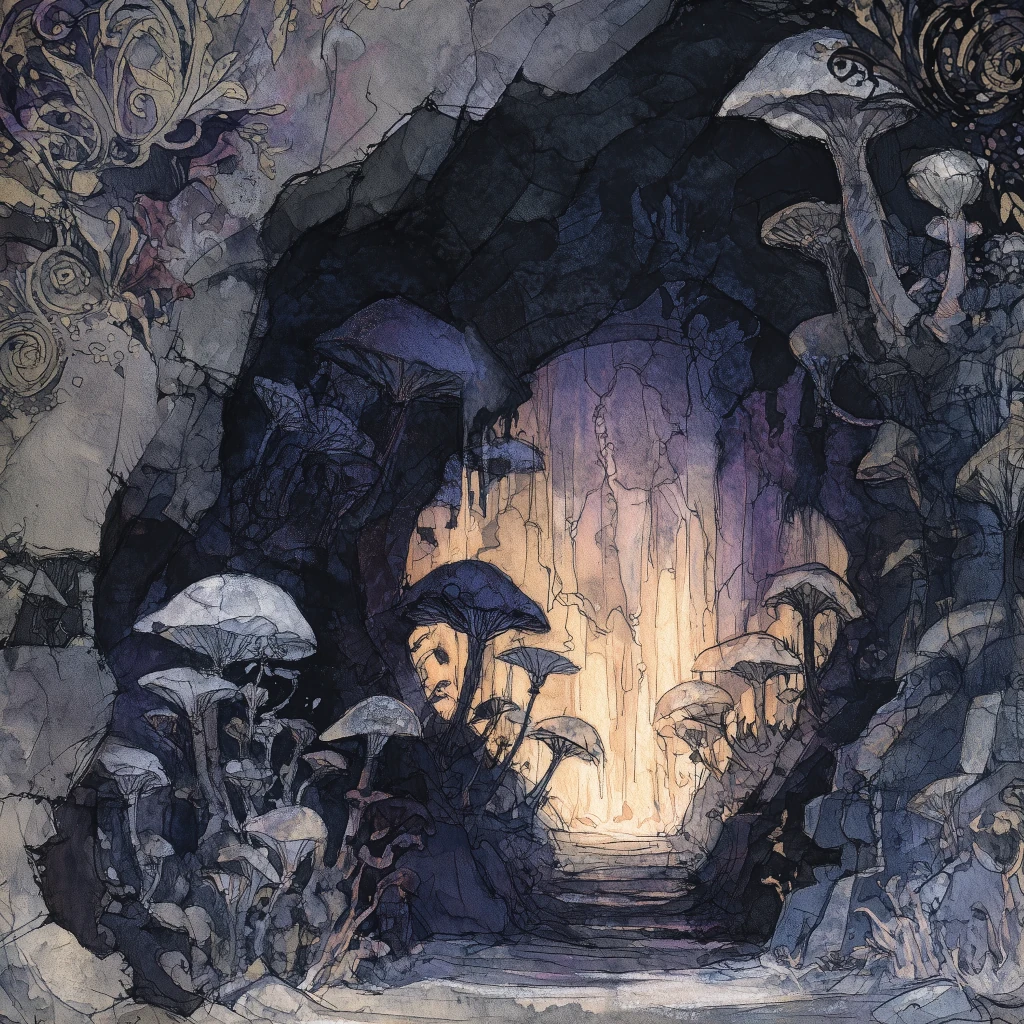
As if breathable air wasn’t rare in the Anvil already, choke mould makes it even more precious. This fungus can survive on minimal soil, minerals or water, but it does require quite a lot of air. A small patch of choke mould might look unassuming, but in less than a day it can suck all breathable air out of a room. Larger patches are actively dangerous to be around, even in places with no shortage of air. Many air-breathing races of the Plane of Earth yearn to exterminate choke mould once and for all, but the spores of this fungus seem to spread far too easily to make eradication that simple.
Darkshine
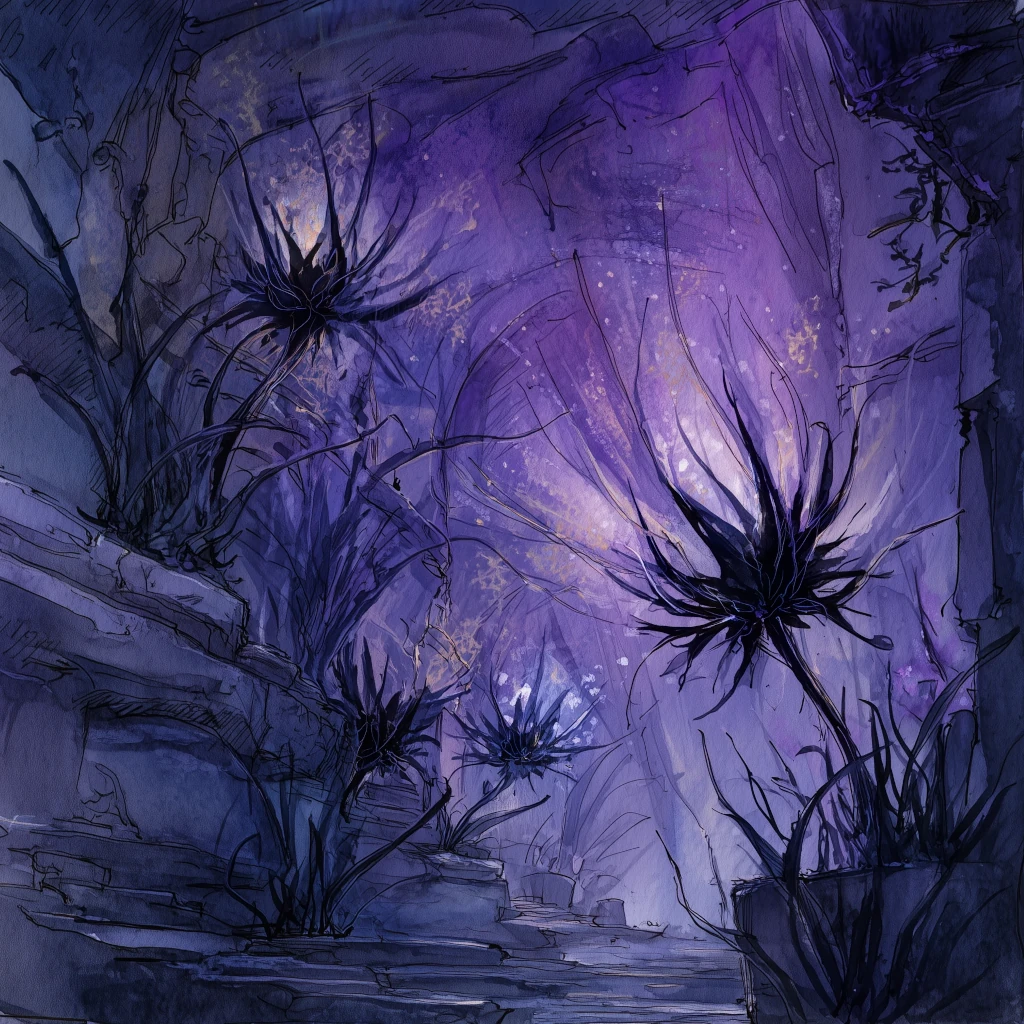
It never occurs to most cutters, but it’s not just animals who can become undead. Or at least undead-like, meaning something able to thrive on negative energy. Darkshine is a fungal organism, with hyphae which spread through solid earth by disintegrating whatever rocky matter they touch. Fortunately, this ability is mostly harmless to living matter. However, darkshine also forms black, glossy fruiting bodies that are shaped like thin blades. These blades are also imbued with negative energy, and they can easily slash through clothes and even hard-boiled leather. Yet at the same time they are very brittle, and will often sna off and get stuck in a poor sod’s flesh. Darkshine fruiting bodies rain spores, and creatures harmed by them serve to disperse this fungus to other pockets of Negative Energy.
Electrolithos
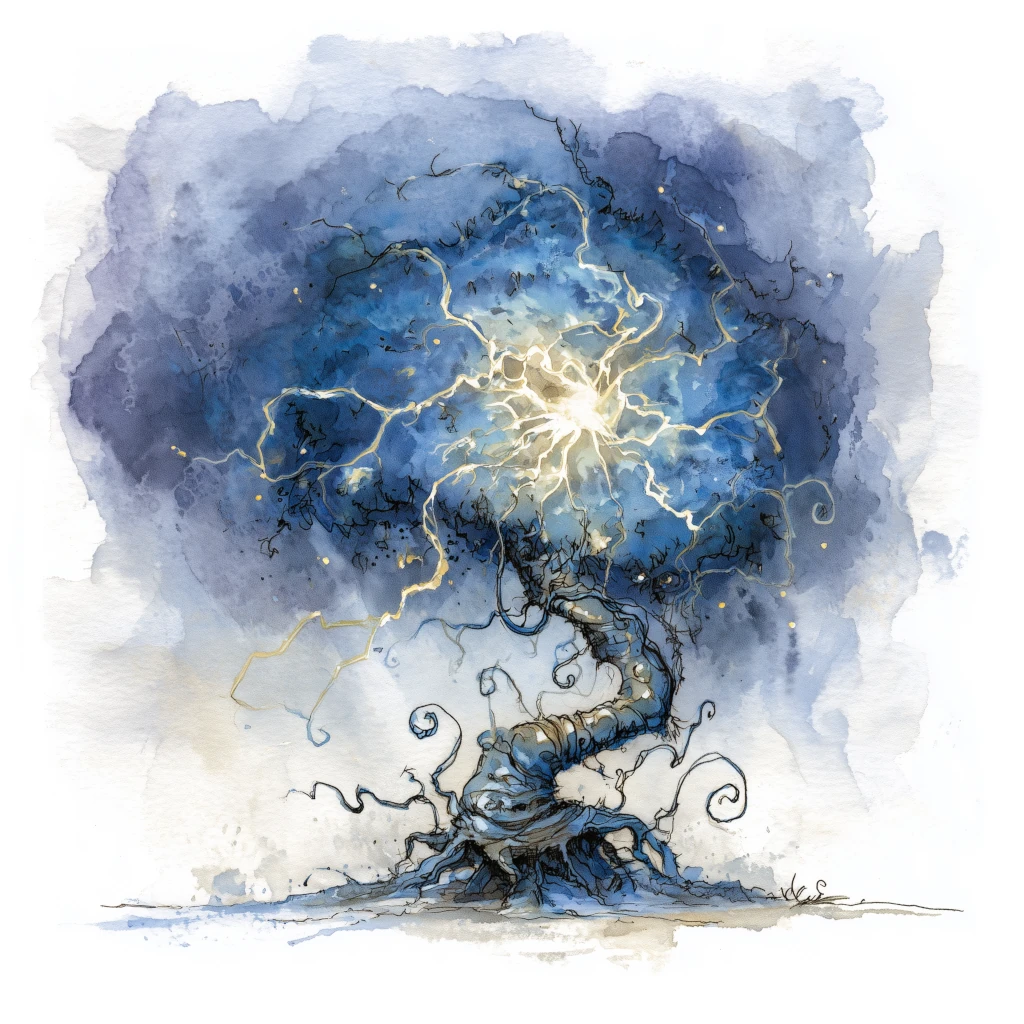
While some berks may mistake electrolithos for another weird plant, a closer inspection shows that it is in fact a weird animal, superficially resembling a kind of worm. From its head protrudes a trunk-like appendage with dozens of branches, while its rear end is adorned with two feather-like gills. Electrolithi live almost exclusively around pockets of Lightning. Their gills serve a double purpose, absorbing both water vapour and electrical energy. Electrolithos thrives on lightning, using its energy to synthesise food, in the same way that Prime plants use light. Any excess energy is redirected into the earth around the worm, melting it to a glass-like substance. Meanwhile, the worm’s rooty trunk searches for grains of metal in the creatre’s vicinity, which are apparently required to sustain its electrical metabolism. When the time comes for reproduction, electrolithi reveal another of their abilities—they can draw back their gills and trunk and glide right through stone like earth elementals. By reading the magnetic fields, they locate first a mate and then a suitable pocket of Lightning, where they’ll nest and lay their eggs. We shad find electrolithi to be a great delicacy, though catching them safely can be tricky [their bodies sparkle with static electricity which does 2d4 electrical damage upon contact].
Lampad Moss
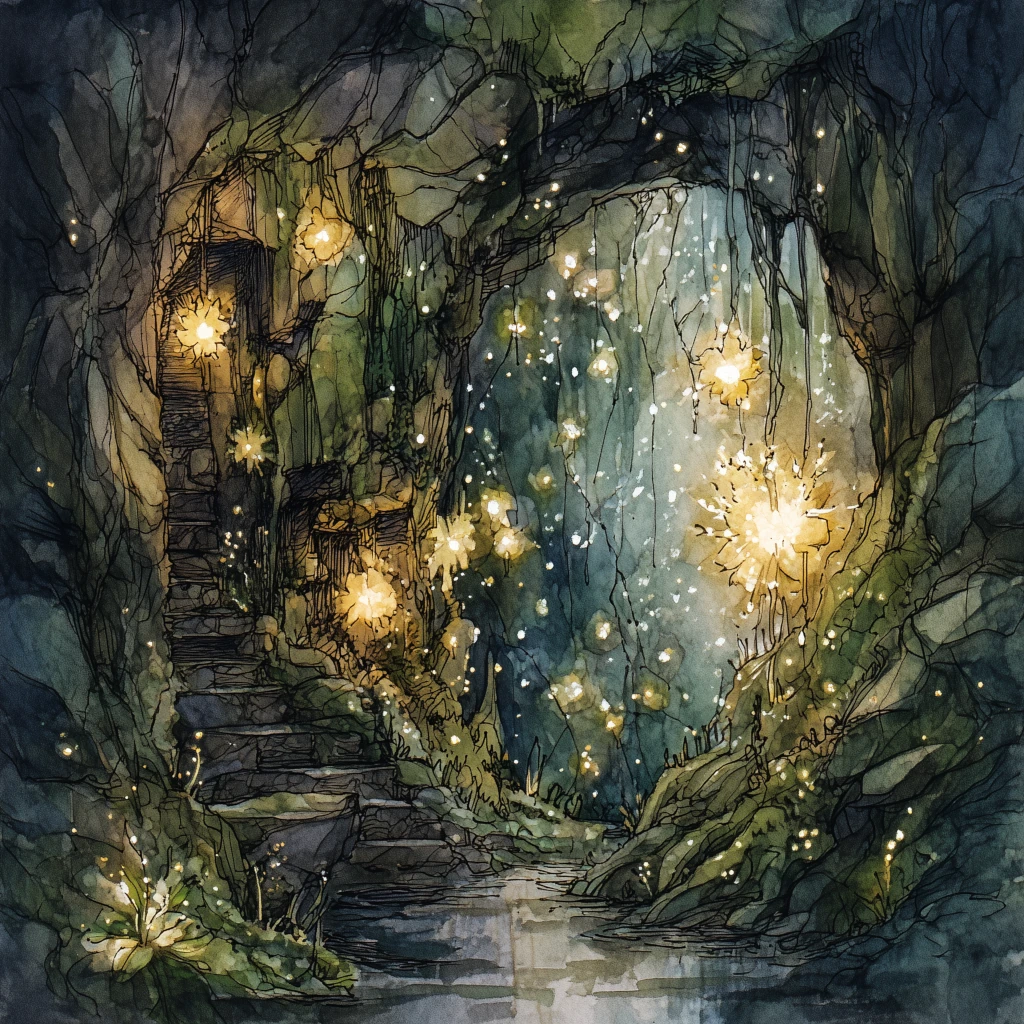
Usually there’s nothing for Prime plants to thrive on among the darkness of rock and stone. But when outsiders came to the Plane of Earth millennia ago, they brought light with them. And along with their light they brought lampad moss spores. These plants thrive on any unoccupied surface that is touched by light, while becoming dormant in the darkness. Thankfully, they don’t consume much aside from air, water and light. The moss has become an important part of the ecosystem of Earth. Many animals of the plane now subsist almost entirely on lampad mosses. In shad cuisine, lampad mosses serve as a nutritious side dish, but most other races don’t find it very palatable. Fey creatures called lampads share our appreciation for these plants, cultivating delicious gardens of moss around their magical lights.
Mineralmite
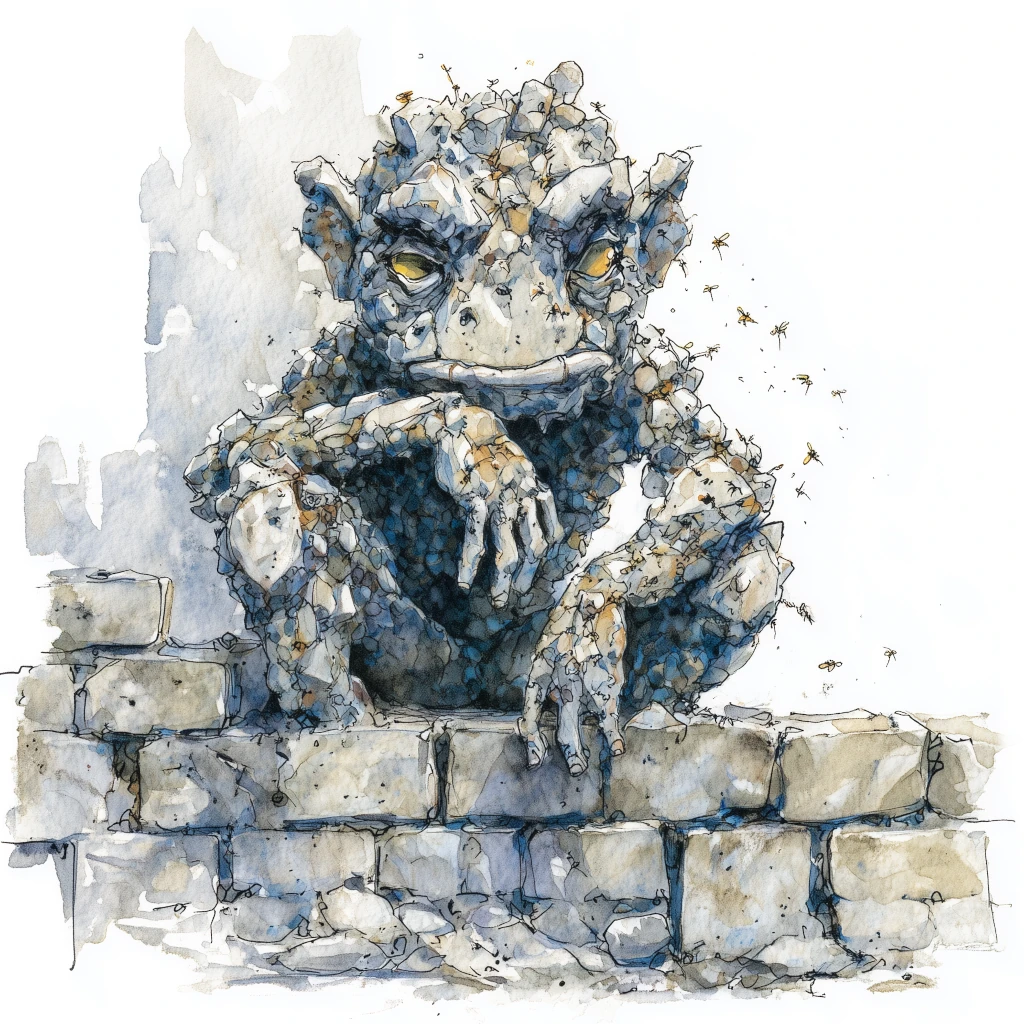
It may not be entirely correct to list these creatures among plants or fungi, but in some ways mineralmites are more similar to chemical-eating bacteria than to any arachnid. Mineralmites are both biological and elemental in their nature, like genies or mephits, giving them the ability to feed exclusively on stone and earth. Mineralmites frequently plague both mines and stone constructions. Heavy infestations of mites will weaken rocks they bore through, since they leave microscopic tunnels behind as they burrow. Such stone can’t support significant weight and tends to crumble to dust when stressed. Moreover, some species of mineralmites are parasites of earth elemental creatures such as pech and mephits. This don’t kill them, but causes horrible irritation. Spells that cure diseases can kill a mineralmite infestation too, but a would-be-doctor must also apply acid, fire or poison to kill residual mineralmites in the environment around the patient otherwise they’ll come right back.
Orevine
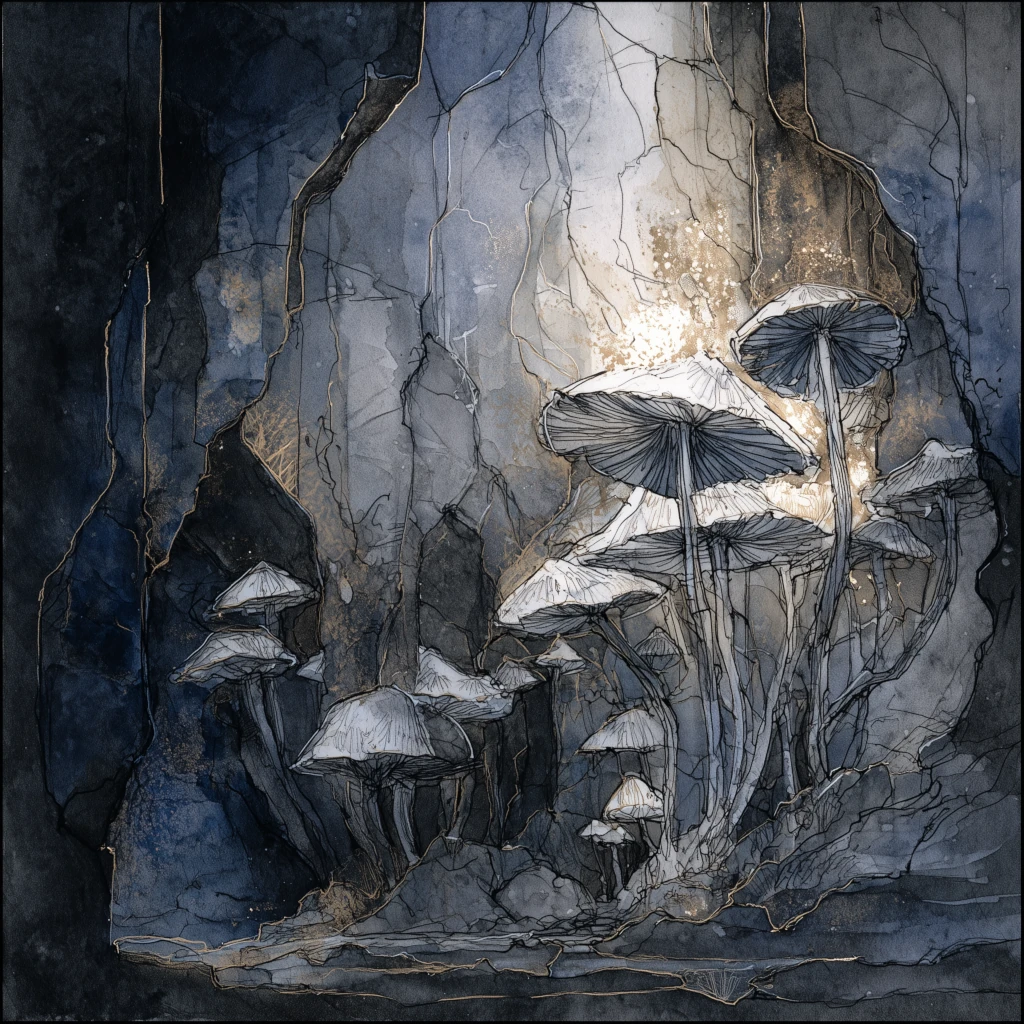
Many species of orevine grow near the border with the Plane of Mineral. They are plants, but appear more like fungi—white, black or gray in colour, each with a giant network of roots that may extend for many miles. Orevine is a symbiont (although most elementals call it a parasite) of an another creature—bacteria that can draw energy from metals. Orevine roots absorb molecules of metal from the soil and into the sap that nurtures bacterial fauna in orevine tubers. What’s unusual about orevine is how it uses miners and treasure-hunters to spread its seeds. Orevine fruits have nuggets of pure metal in their core. When some dwarf or gnome plucks a fruit, they’ll peel it to reach the useful metal and throw away the rest of the fruit that contains the seeds. I am of the opinion that the orevine initially evolved to attract khagras and use them as vessels for their seeds. Puzzlingly, orevine isn’t found in the Plane of Mineral itself—chant goes quasielementals furiously root it out and destroy it, viewing it as planty vermin.
Ruby Leg
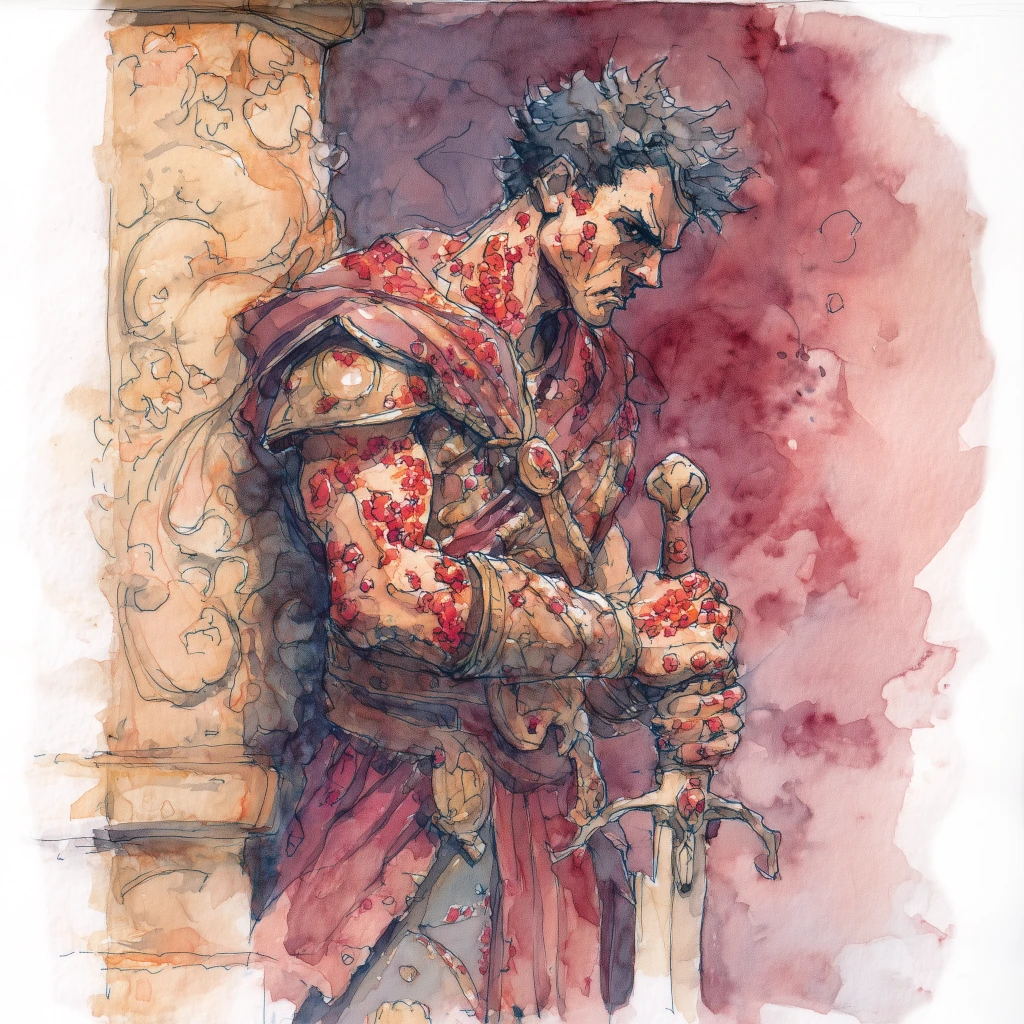
While the Plane of Earth isn’t nearly as vile as the Para-Plane of Ooze, we have a fair share of diseases too. Diseases like tetanus and gas gangrene thrive in the airless caves, and more than a few poor sods have emerged victorious from a bloody fight only to succumb to some horrible illness days later. But ruby leg disease is unique to the Plane of Earth and uniquely horrifying as well. Graybeards say it is caused by a species called Clostridium—a kind of bacteria known for its aversion to air, and its deadly toxins. Ruby leg spores patiently lie dormant in earth and dust for years. When they enter an open wound however, they begin to produce a poison. This toxin is magical, and when it touches blood, it transmutes it to microscopic needle-like red crystals. Of course, this is both painful and deadly, first leading to necrosis around the wound and then to gruesome internal bleeding and thrombosis throughout the body. Immune systems of fleshy beings are utterly unprepared to deal with this mineral-based toxin, so the only ways to save a body afflicted with ruby leg are to clean out the wound and apply healing and restoration spells, antibiotic treatments and, most importantly, dispelling the bacteria’s magic (and even then some strains seem to be magic-resistant). Dao and earth genasi can be infected by ruby leg too, but for those creatures this disease merely causes a mild rash. We shad, are likewise resistant, but we still try to keep our wounds clean, just in case.
Stoneshroom
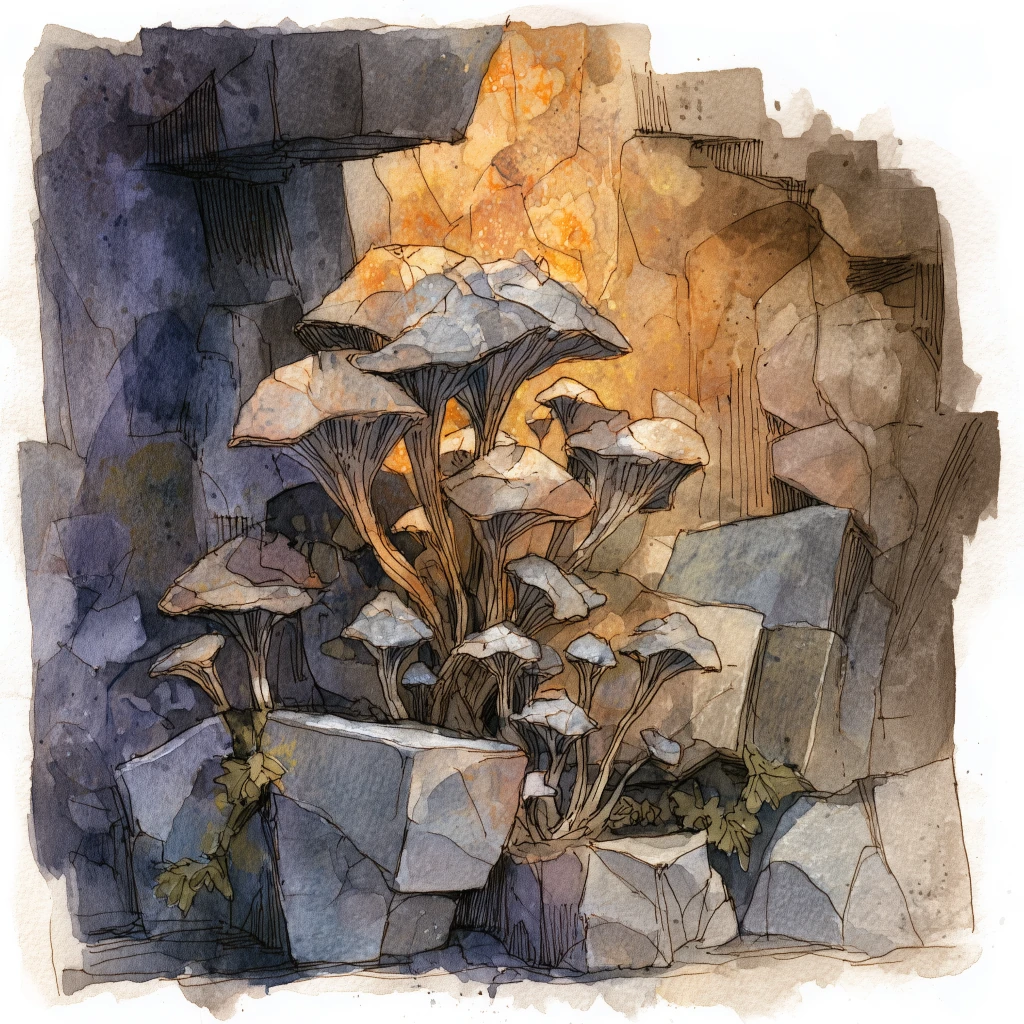
Below, I’ve never paid much mind to Powers, but even I sometimes think stoneshrooms were created by some benevolent elemental god. This fungus radiates an aura of transmutation magic, when checked with a spelllikedetect magic spell. Ambient magic permeates the multiverse, and stoneshrooms tap into the magical weave just like wizards. Fungi use it to transmute inorganic matter into something they can consume. In a peculiar quirk of their physiology, they also create clean and breathable air as a byproduct. The graybeards reckon that stoneshrooms do this as a way to attract potential spore carriers to where they grow. Stoneshrooms are also edible, even raw, although they have the tendency to accumulate toxic substances from their surroundings. A simple purify food and drink spell renders them generally safe. They are particularly delicious when served with devilled xorn eggs, and have the beneficial side-effect of allowing cutters who breathe air to hold their breath for twice as long as usual, for the rest of the day.
Source: Dragon Magazine #347 p48,54. Canonwatch: Dragon Magazine #347 (Elemental Hazards: Adamant Algae, Choke Mold, Darkshine, Mineralmite, Orevine); others are homebrew by Margarita
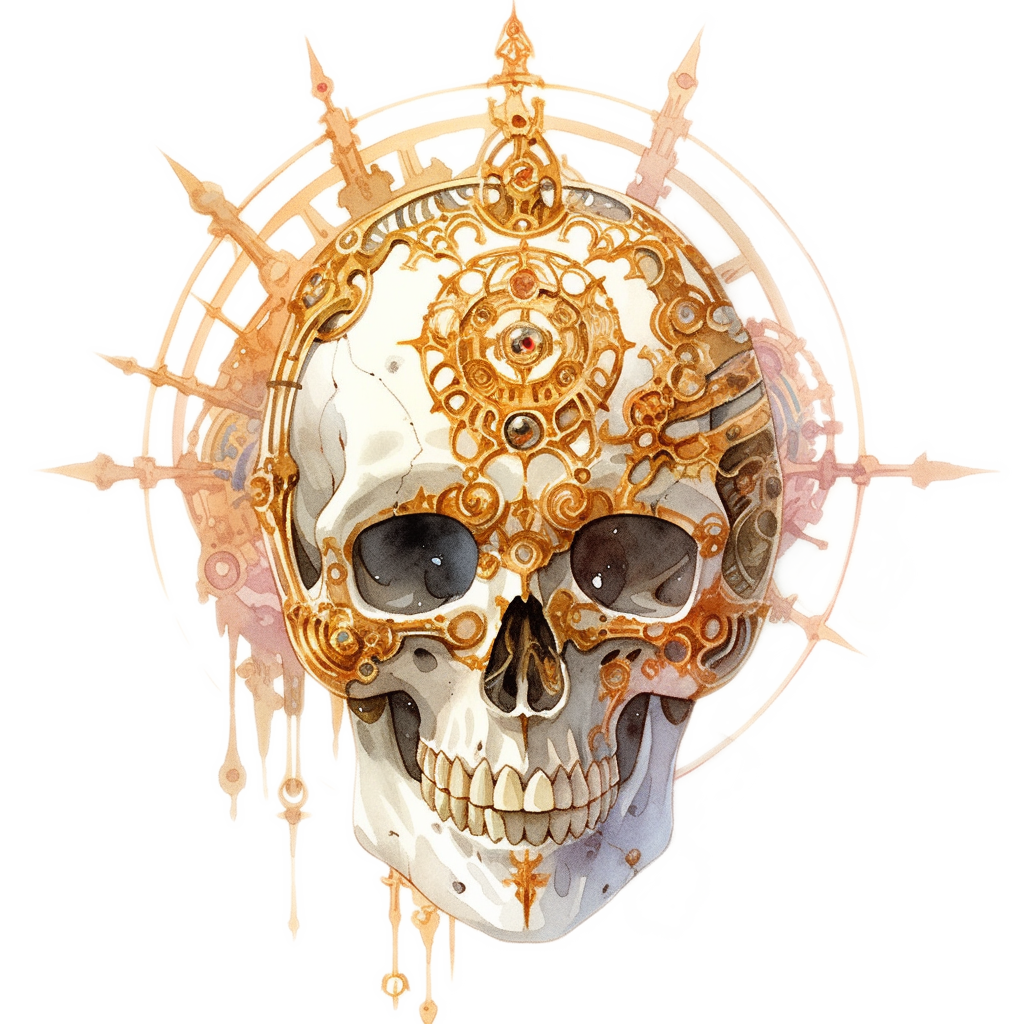
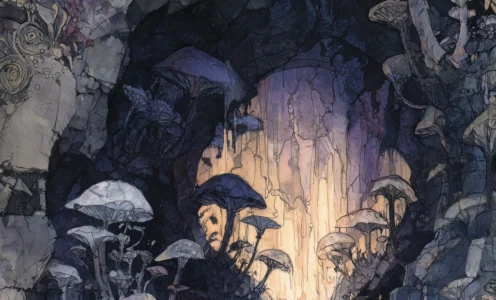
It’s worth noting that none of these are “pure Earth.” Because all the parts of Earth that are pure and untainted lack any space whatsoever – hence its moniker of ‘The Anvil’, as everything that ends up in pure Earth is crushed, provided they can’t move through solid earth the way elementals can. Essentially anywhere you see a ‘pocket’ of open space, that’s an incursion from Air. Same goes for holes or gaps that are full of water or slime or magma.